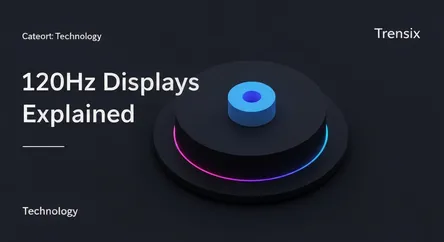Technology
120Hz Displays Explained

Discover what a 120Hz display is and why this high refresh rate technology provides smoother scrolling, better gaming, and an enhanced user experience.
What is it?
A 120Hz display is a screen that refreshes the image it shows 120 times per second. The unit "Hertz" (Hz) represents frequency, so a 120Hz display updates twice as often as a standard 60Hz screen. This rapid update cycle allows the display to render motion with significantly more frames, which results in a much smoother and more fluid visual experience. By reducing the gap between each frame update, it minimizes motion blur and judder, making animations, scrolling, and fast-paced video content appear incredibly crisp and clear to the human eye.
Why is it trending?
Once a premium feature reserved for high-end gaming monitors, 120Hz technology is now a mainstream trend in smartphones, tablets, and even laptops. The primary driver is the dramatic improvement it brings to the user experience. As component costs have fallen, manufacturers are increasingly adopting high refresh rates as a key differentiator in a competitive market. The explosion of mobile gaming, where split-second reactions matter, and the desire for a more premium-feeling interface have made 120Hz displays a highly sought-after feature for consumers seeking top-tier performance from their everyday gadgets.
How does it affect people?
For the average person, the most noticeable effect is dramatically smoother scrolling. Navigating websites, social media feeds, and system menus feels more responsive and seamless. For gamers, a 120Hz screen can offer a competitive edge by reducing input lag and making fast-moving targets easier to track. This enhanced clarity and responsiveness makes the entire device feel faster and more pleasant to use. The main trade-off can be increased battery consumption, though many modern devices use adaptive refresh rate technology to intelligently lower the rate when high speeds aren't needed, preserving battery life.